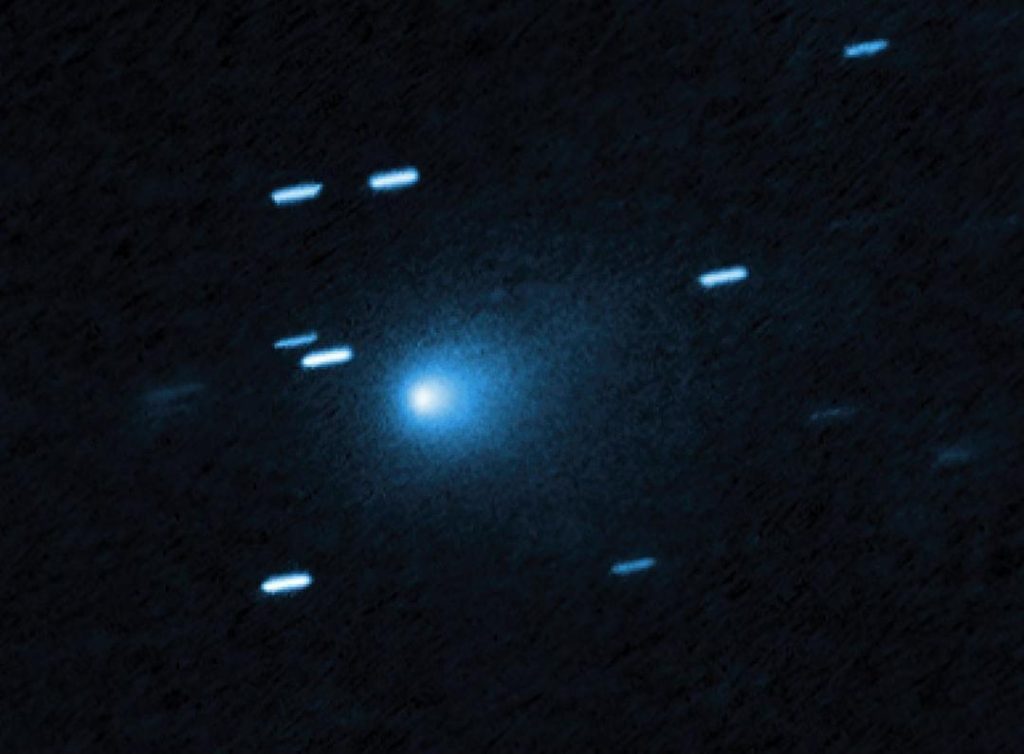
It may come to save us or destroy us: Harvard astronomer on mysterious interstellar object
The universe is full of mysteries, and sometimes the things we discover can leave us bewildered and wondering. One such phenomenon is the mysterious interstellar object, dubbed 31/ATLAS, which is currently making its way through our solar system. As experts from Harvard University’s Department of Astronomy have warned, this object could potentially save us or destroy us. The question on everyone’s mind is, what exactly is this object, and what are the implications of its presence in our solar system?
Dr. Avi Loeb, the former chair of Harvard’s Department of Astronomy, has shed some light on this enigmatic object. According to reports, Dr. Loeb believes that 31/ATLAS could be a harbinger of doom or a savior, depending on its composition and intentions. He has urged scientists to take a closer look at the object and determine whether it is a rock or not.
“We’ve never seen such a thing…A comet doesn’t glow in front,” Dr. Loeb stated, emphasizing the uniqueness of this object. He further added, “We’d better be ready for both options and check whether all interstellar objects are rock.”
But what exactly is 31/ATLAS? The object was first discovered in 2019 by the Pan-STARRS telescope at Haleakala Observatory in Hawaii. At the time, it was thought to be a comet, but as more observations were made, scientists realized that it didn’t behave like a typical comet. Instead, it seemed to be a strange, glowing object that was moving rapidly through our solar system.
Dr. Loeb’s warning is not unfounded. If 31/ATLAS is indeed a rocky object, it could potentially cause catastrophic damage if it were to collide with Earth. On the other hand, if it is a comet, it could bring life-giving nutrients and water to our planet.
The implications of 31/ATLAS’s presence in our solar system are far-reaching and complex. If it is a comet, it could potentially provide valuable insights into the origins of life on Earth. Comets are believed to have brought water and organic molecules to our planet, which is essential for life to exist. If 31/ATLAS is a comet, it could be a relic from the early days of our solar system, and studying it could help scientists understand the origins of life on Earth.
On the other hand, if 31/ATLAS is a rocky object, it could pose a significant threat to our planet. A collision with Earth could cause widespread destruction and potentially even lead to the extinction of our species. This is a sobering thought, and it highlights the importance of continued monitoring and research into this mysterious object.
Dr. Loeb’s warning serves as a reminder of the importance of being prepared for the unexpected. As scientists, we are constantly pushing the boundaries of what we know and understanding the universe around us. However, we must also be aware of the potential risks and consequences of our discoveries.
In conclusion, the mysterious interstellar object 31/ATLAS is a phenomenon that has the potential to save us or destroy us. As Dr. Loeb has warned, we must be prepared for both options and take a closer look at this object to determine its composition and intentions. Whether it is a comet or a rocky object, 31/ATLAS is a reminder of the awe-inspiring vastness and complexity of the universe, and the importance of continued exploration and discovery.






